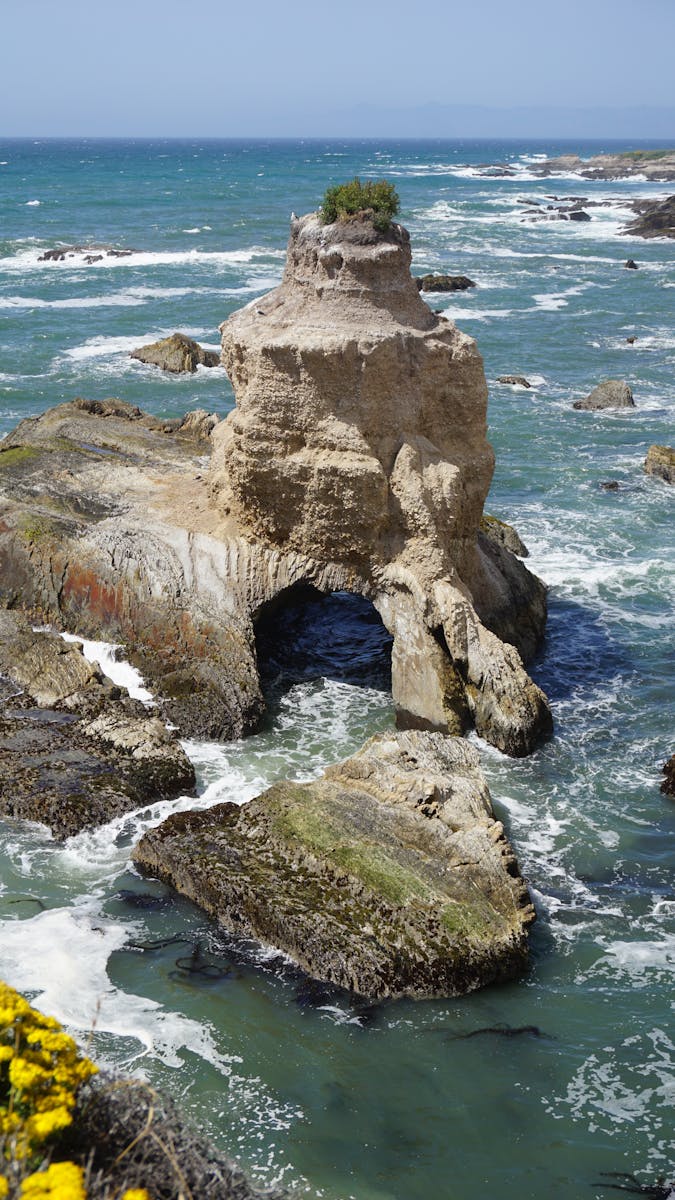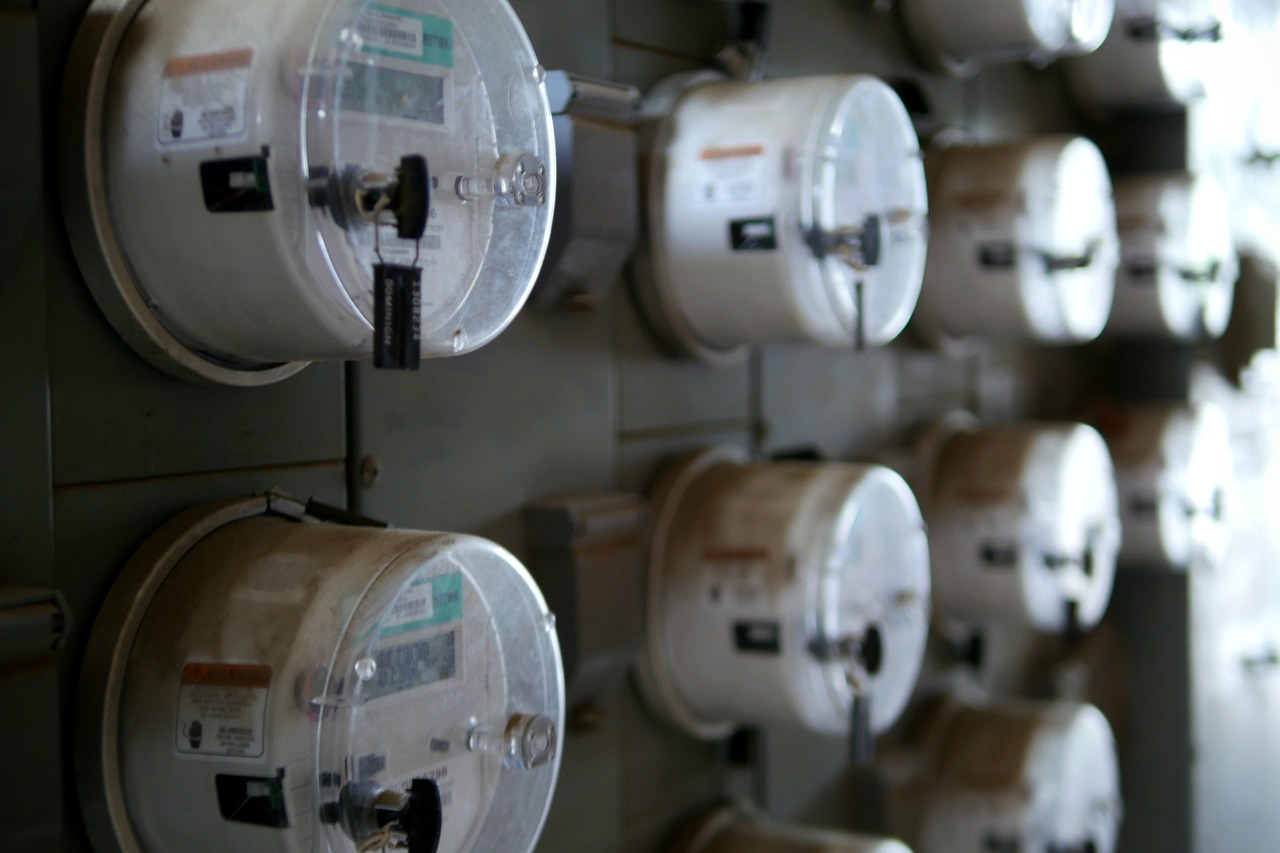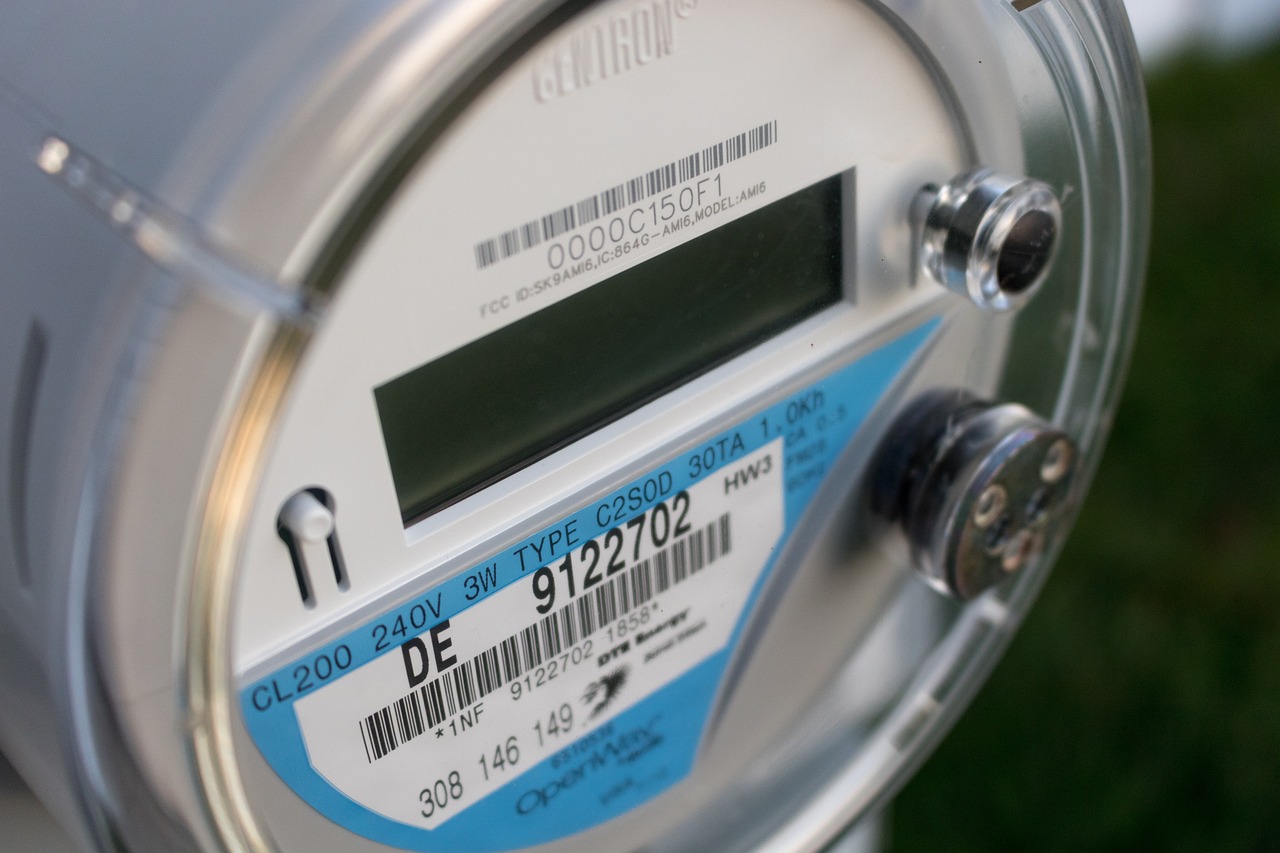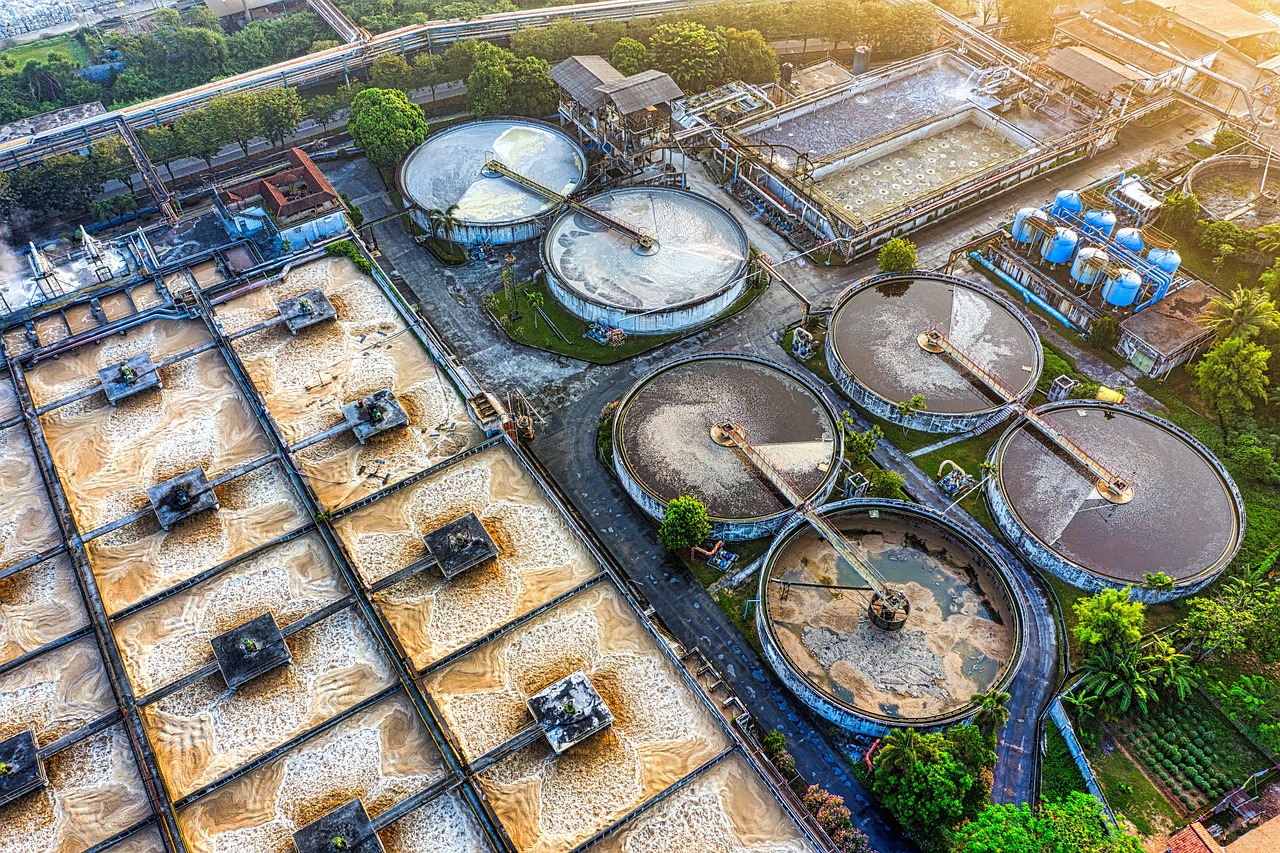San Luis Obispo Water Insights
Overall Score
San Luis Obispo Water Insights
Overall Score
San Luis Obispo Water Insights
🌍 Continent
North America
🚩 Country
United States of America
👥 Population
Approximately 47,000
💧 Water Management System
Managed by the City of San Luis Obispo Utilities Department, focusing on water supply, wastewater, and stormwater services.
🌊 Flood Zones
Identified and managed by the San Luis Obispo County Flood Control and Water Conservation District.
📏 Water Levels
Reservoirs like Santa Margarita Lake are monitored regularly; as of late 2024, it was at 88% capacity.
✈️ Living & Working Remotely
🏞️ Lakes and Reservoirs
Includes Lopez Lake and Santa Margarita Lake, providing water supply and recreational opportunities.
🏖️ Beaches
Nearby coastal areas such as Pismo Beach and Avila Beach offer public access. Checkout CoolContrast
🔧 Water Technologies
Utilizes modern water treatment and monitoring systems to ensure quality and efficiency.
🏭 Desalination Plants
No significant desalination facilities currently in operation.
🌧️ Rain Capture Systems
Encourages rainwater harvesting through community programs, though adoption varies.
🏞️ Rivers
San Luis Obispo Creek runs through the city, with ongoing conservation efforts.
🌊 Dams
Lopez Dam on Arroyo Grande Creek forms Lopez Lake, a key water source.
🚰 Drainage Systems
The city’s storm drain system channels runoff directly to local creeks without treatment.
🌿 Sustainability Initiatives
Focuses on water conservation, pollution prevention, and sustainable urban planning.
🌡️ Climate Vulnerability
Susceptible to droughts and variable rainfall patterns, impacting water resources.
💦 Water Quality Index
Maintains high water quality standards through regular monitoring and treatment. Go to Tap Water to learn more.
🌊 Water Flow Rate
Varies seasonally in local creeks; managed to support ecological health.
⚖️ Water Rights and Regulations
Governed by state and local laws, with oversight from the San Luis Obispo County Flood Control and Water Conservation District.
🎣 Fishing Conditions
Opportunities available in local lakes and coastal areas, subject to state regulations.
🚣 Recreational Water Activities
Activities like boating, kayaking, and swimming are popular in nearby lakes and along the coast.
☁️ Weather Patterns
Mediterranean climate with mild, wet winters and dry summers.
🐠 Aquatic Life
Home to diverse species in creeks and coastal waters, including steelhead trout in San Luis Obispo Creek.
🚢 Shipping and Ports
No major shipping ports; nearby Morro Bay serves as a small harbor.
🏗️ Water Infrastructure
Includes treatment plants, reservoirs, and distribution systems to manage water supply and quality.
🌱 Native Flora
Features coastal sage scrub, oak woodlands, and chaparral ecosystems.
🦆 Wetlands
Wetland areas are present, particularly near creek mouths and estuaries, supporting diverse wildlife.
🏡 Residential Water Usage
Residents are encouraged to conserve water through various city programs and initiatives.
🏢 Commercial Water Usage
Businesses implement water-saving measures in line with city conservation goals.
🏥 Public Health and Water
Ensures safe drinking water and manages wastewater to protect public health.
🗺️ Geographic Features
Situated between the Coast Range and the Pacific Ocean, featuring rolling hills and valleys.
🛑 Water Restrictions
Implements water use restrictions during drought conditions to preserve resources.
📊 Water Usage Statistics
Regularly monitors and reports on water consumption to inform conservation efforts.
🌐 Impact on Global Water
Participates in broader water conservation initiatives, contributing to global sustainability goals.
📚 Water Education Programs
Offers educational resources and programs to promote water stewardship among residents.
🤝 Community Engagement in Water Conservation
Encourages public participation in conservation through workshops and volunteer opportunities.
🏆 Awards and Recognition for Water Stewardship
Recognized for efforts in water conservation and sustainable management practices.
📜 Historical Water Sites
Includes historic dams and water infrastructure reflecting the city’s development.
🚨 Emergency Water Preparedness
Maintains plans to ensure water availability during emergencies, such as droughts or natural disasters.
🌈 Water Conservation Efforts
Implements programs to reduce water usage and promote sustainable practices among residents and businesses.
🛒 Water Market and Economy
Manages water resources to support local agriculture and more.
💼 Economic Impact of Water
Water is vital for San Luis Obispo’s agriculture, tourism, and local businesses, influencing the region’s economic sustainability.
✅ Overall Score
🏙️ Urban Planning Score
🌊 Flood Zones Management
📏 Water Levels
🏞️ Lakes and Reservoirs
🏖️ Beaches Score
🔧 Water Technologies
🏭 Desalination Plants
🌧️ Rain Capture Systems
🏞️ Rivers Score
🌊 Dams Score
🚰 Drainage Score
🌿 Sustainability Score
🌡️ Climate Vulnerability Score
💦 Water Quality Score
🌊 Water Flow Score
⚖️ Water Rights Score
🎣 Fishing Score
🚣 Recreation Score
☁️ Weather Patterns Score
🐟 Aquatic Life Score
🚢 Shipping and Ports Score
🏗️ Infrastructure Score
🌱 Native Flora Score
🦆 Wetlands Score
🏡 Residential Water Use
🏢 Commercial Water Use
🏥 Public Health Score
🗺️ Geographic Features Score
🛑 Water Restrictions Score
📊 Water Usage Statistics
🌐 Global Impact Score
📚 Educational Programs Score
🤝 Community Engagement
🏆 Awards and Recognition
📜 Historical Sites Score
🚨 Emergency Preparedness
🌈 Water Conservation Score
🛒 Water Market Score
Community and Education in Water Management – San Luis Obispo, CA
San Luis Obispo fosters a strong culture of community involvement and education in water conservation and sustainability. The city actively engages residents, businesses, and students in learning about responsible water use, environmental stewardship, and the importance of long-term water security.
Public Education Programs
- The City of San Luis Obispo Utilities Department offers educational materials, workshops, and online resources to inform residents about water conservation, pollution prevention, and sustainable water practices. (slocity.org)
- The Think H2O SLO Program educates the public on ways to reduce water consumption, implement drought-friendly landscaping, and use water-efficient appliances.
School and University Initiatives
- Local schools and Cal Poly San Luis Obispo integrate water sustainability topics into their curricula, encouraging students to engage in research, conservation projects, and community outreach.
- Student-led programs like SLO Water Watch focus on monitoring local water quality and advocating for sustainable water use.
Community Workshops and Events
- The city hosts water conservation workshops, teaching residents about rainwater harvesting, efficient irrigation, and drought-resistant landscaping.
- Annual water awareness campaigns encourage residents to participate in conservation efforts, report leaks, and adopt sustainable water habits.
Citizen Science and Volunteer Programs
- Local groups collaborate on citizen science projects, such as testing water quality in San Luis Obispo Creek and monitoring groundwater recharge basins.
- Volunteers participate in creek cleanups, habitat restoration projects, and stormwater pollution prevention programs.
Rebates and Incentives for Residents
- The city provides financial incentives for water-efficient appliances, drought-friendly landscaping, and smart irrigation systems to encourage conservation at the household level.
- Free home water audits help residents identify ways to reduce their water usage.
Public Participation in Policy Decisions
- San Luis Obispo actively involves the community in water planning and policy development, hosting public meetings, surveys, and advisory committees to ensure transparency and collaboration in water management.
- The city’s Climate Action Plan integrates community input to address long-term water sustainability and climate resilience.
Empowering a Water-Smart Community
San Luis Obispo’s commitment to public education and community engagement ensures that residents are informed, proactive, and involved in protecting their water resources. By integrating education into schools, public programs, and policy discussions, the city builds a resilient and conservation-minded community ready to tackle future water challenges.
Urban Planning and Water Management in San Luis Obispo, CA
San Luis Obispo integrates sustainable urban planning with responsible water management to support a growing population while preserving its natural resources. The city’s approach focuses on smart growth, green infrastructure, and water-efficient development to reduce water waste and ensure long-term sustainability.
Smart Growth and Land Use Planning
- The City of San Luis Obispo General Plan incorporates water conservation goals into land use policies to prevent overdevelopment in water-sensitive areas.
- Zoning laws encourage mixed-use, compact development to minimize sprawl and reduce water demand for new housing and commercial areas.
Low-Impact Development (LID) Strategies
- The city promotes permeable pavements, bioswales, and rain gardens to capture and filter stormwater, reducing runoff and improving groundwater recharge.
- Green roofs and drought-resistant landscaping in public and private spaces help lower water consumption and mitigate urban heat islands.
Stormwater and Flood Management
- The Waterway Management Plan integrates stormwater capture systems and drainage infrastructure to prevent flooding and reduce pollution in local creeks. (slocity.org)
- Public spaces and new developments must comply with stormwater retention requirements to slow down runoff and protect water quality.
Sustainable Water Infrastructure
- Investments in water recycling facilities and advanced water treatment plants help supply clean water while reducing reliance on imported sources.
- Smart water meters and leak detection technology ensure efficient water distribution and reduce water waste.
Drought-Resilient Landscaping Regulations
- City ordinances require drought-tolerant landscaping in new developments and public spaces to conserve water.
- Rebates and incentives encourage residents and businesses to replace lawns with native, water-efficient plants.
Integration with Climate Action Planning
- Urban planning aligns with the San Luis Obispo Climate Action Plan, ensuring sustainable water use, carbon reduction, and ecosystem protection.
- Resilience planning accounts for droughts, extreme weather, and future water demand, securing the city’s long-term sustainability.
Public Transportation and Water Conservation
- Expanded bike lanes, public transit options, and pedestrian-friendly designs reduce the need for paved surfaces, which contribute to stormwater runoff and heat retention.
- Sustainable urban mobility helps lower infrastructure-related water consumption by minimizing road construction and maintenance.
Building a Water-Resilient City
San Luis Obispo’s urban planning prioritizes sustainability, water conservation, and smart growth to ensure efficient water use while maintaining the city’s quality of life. By integrating green infrastructure, stormwater management, and drought-resilient policies, the city is preparing for future water challenges while fostering a thriving, eco-friendly community.
Sustainability and Water Conservation in San Luis Obispo, CA
San Luis Obispo is committed to sustainable water management and conservation, implementing proactive strategies to reduce water waste, protect natural resources, and ensure long-term water availability. The city integrates public education, innovative technologies, and policy-driven initiatives to maintain a resilient water system.
Groundwater and Surface Water Sustainability
- The city follows Sustainable Groundwater Management Act (SGMA) guidelines to protect and replenish aquifers, ensuring a reliable water supply.
- Local reservoirs, including Lopez Lake and Santa Margarita Lake, are actively managed for efficient water storage and conservation.
Water Recycling and Reuse
- Tertiary-treated recycled water is used for irrigation, landscaping, and industrial purposes, reducing reliance on freshwater sources.
- The city is expanding purple pipe systems for delivering non-potable water to parks, golf courses, and public spaces.
Drought-Resistant Landscaping and Green Infrastructure
- Ordinances require drought-tolerant plants and xeriscaping in new developments, helping reduce outdoor water use.
- The city encourages residents and businesses to replace lawns with native plants, rain gardens, and permeable surfaces to retain moisture and limit runoff.
Rainwater Harvesting and Stormwater Capture
- Homeowners and businesses are incentivized to install rain barrels and cisterns to capture and reuse rainwater for irrigation.
- Green infrastructure projects, such as bioswales and retention basins, help filter and recharge groundwater supplies while reducing flood risks.
Water-Efficient Technology and Smart Systems
- Smart irrigation controllers and drip irrigation systems are promoted through rebate programs to reduce unnecessary watering.
- The city has installed smart water meters, allowing real-time monitoring of water usage and early leak detection to prevent waste.
Public Awareness and Community Involvement
- The Think H2O SLO program educates residents on water-saving techniques, rebates, and sustainable practices.
- Annual Water Conservation Challenges engage the community in reducing household water consumption.
- Schools and universities, including Cal Poly San Luis Obispo, integrate water conservation research and student-led initiatives into their sustainability programs.
Emergency Water Conservation Measures
- During drought periods, tiered water pricing and mandatory conservation rules are implemented to limit excessive use.
- The city actively promotes “Water Watchers” programs, where volunteers help report water waste.
A Model for Water Conservation
San Luis Obispo’s approach to sustainability and conservation ensures that the city maximizes water efficiency, protects ecosystems, and secures resources for future generations. Through smart water management, green technology, and strong community engagement, the city remains a leader in responsible water use and environmental stewardship.
Public Health and Water Management in San Luis Obispo, CA
San Luis Obispo prioritizes public health by ensuring access to clean, safe drinking water, effective wastewater treatment, and pollution control. The city’s water quality monitoring, emergency preparedness, and community education programs help safeguard residents from waterborne diseases and environmental hazards.
High Water Quality Standards
- The City of San Luis Obispo Utilities Department ensures that drinking water meets or exceeds EPA and California State Water Board regulations.
- Water undergoes filtration, chlorination, and UV disinfection to remove contaminants and pathogens.
- Regular water quality testing detects nitrates, arsenic, lead, and microbial pollutants to ensure safe drinking water. (slocity.org)
Fluoridation for Dental Health
- The city adds fluoride to its drinking water at recommended levels to support dental health and prevent tooth decay, following CDC guidelines.
Stormwater and Pollution Prevention
- The Stormwater Management Program prevents contaminants from entering creeks and groundwater by managing urban runoff.
- Green infrastructure like bioswales and permeable pavement helps filter pollutants before they reach water sources.
Emergency Preparedness for Water Safety
- The city has contingency plans for water shortages, contamination events, and droughts to ensure public health is not compromised.
- Backup water supplies and alternative sources are in place to maintain clean water access during emergencies.
Wastewater Treatment and Public Safety
- The San Luis Obispo Water Resource Recovery Facility (WRRF) treats wastewater before it is safely discharged or reused for non-potable applications.
- Advanced wastewater treatment protects residents from exposure to bacteria, viruses, and harmful chemicals.
Community Education on Public Health and Water Safety
- The Think H2O SLO program teaches residents about preventing water contamination, safe water storage, and reducing household pollutants.
- Schools and universities, including Cal Poly San Luis Obispo, engage in water quality research and public health studies.
Addressing Contaminants and Emerging Concerns
- The city actively monitors for PFAS (per- and polyfluoroalkyl substances), pharmaceuticals, and emerging pollutants to address potential health risks.
- Public reports and Consumer Confidence Reports (CCRs) inform residents about any detected contaminants and health precautions.
Protecting Public Health Through Water Management
San Luis Obispo’s integrated water management approach ensures that clean drinking water, wastewater treatment, and pollution control remain top priorities for public health. With strict safety standards, real-time monitoring, and proactive community education, the city continues to safeguard its residents from water-related health risks.
Infrastructure and Technology in Water Management – San Luis Obispo, CA
San Luis Obispo has developed a modern, resilient water infrastructure supported by advanced technology to ensure efficient water delivery, wastewater treatment, and sustainability. The city continually upgrades its systems to enhance water quality, improve conservation efforts, and adapt to climate challenges.
Water Treatment and Distribution
- The San Luis Obispo Water Treatment Plant utilizes multi-stage filtration, chlorination, and UV disinfection to provide safe drinking water.
- A well-maintained pipeline network ensures reliable water delivery to homes and businesses.
- Smart water meters track real-time water usage, allowing for leak detection and conservation incentives.
Groundwater Recharge and Storage
- Recharge basins collect and store excess rainwater, preventing groundwater depletion.
- Surface water from Lopez Lake and Santa Margarita Lake supplements the city’s drinking water supply.
Stormwater and Flood Management
- The Stormwater Management Program incorporates permeable pavements, retention basins, and bioswales to reduce runoff and improve water infiltration.
- Drainage systems direct stormwater into natural waterways while minimizing urban flooding. (slocity.org)
Wastewater Treatment and Water Recycling
- The Water Resource Recovery Facility (WRRF) treats wastewater to tertiary levels, allowing for safe reuse in irrigation and industrial applications.
- Recycled water pipelines (“purple pipes”) supply non-potable water to parks, golf courses, and commercial landscapes.
- Plans to expand water recycling capacity further support long-term sustainability.
Energy Efficiency in Water Operations
- The city is investing in solar-powered pumping stations and energy-efficient water treatment technologies to lower the environmental impact.
- Smart grid integration optimizes electricity use across water infrastructure systems.
Leak Detection and Remote Monitoring
- Advanced SCADA (Supervisory Control and Data Acquisition) systems allow real-time monitoring of water pressure, quality, and infrastructure performance.
- Acoustic leak detection technology prevents water loss by identifying underground pipe failures before they become major issues.
Public Engagement Through Digital Platforms
- Residents can access real-time water usage data through online portals, helping them adjust consumption habits.
- The city uses GIS mapping tools to track water infrastructure projects and display updates on conservation efforts.
Innovative Water Infrastructure for a Resilient Future
San Luis Obispo’s investment in modern infrastructure and advanced technology ensures sustainable water management, conservation, and reliability. By integrating smart systems, renewable energy, and water recycling initiatives, the city is building a future-proof water network that supports both residents and the environment.
Water Management System in San Luis Obispo, CA
San Luis Obispo’s water management system is designed to ensure a sustainable, reliable, and high-quality water supply for residents, businesses, and the environment. The city manages its water resources through advanced infrastructure, conservation efforts, and regulatory policies, balancing urban needs with environmental protection.
Primary Water Sources
- Surface Water: The city sources most of its water from Lopez Lake, Whale Rock Reservoir, and Salinas Reservoir (Santa Margarita Lake). These reservoirs provide treated drinking water.
- Groundwater: Although limited, groundwater wells supplement the city’s water supply when necessary.
- Recycled Water: The Water Resource Recovery Facility (WRRF) treats wastewater to tertiary levels, allowing for safe reuse in irrigation and landscaping.
Water Treatment and Distribution
- The San Luis Obispo Water Treatment Plant ensures that all water meets or exceeds EPA and California State Water Board standards.
- Multi-stage filtration, chlorination, and UV disinfection are used to remove contaminants and maintain water safety.
- Smart water meters help monitor consumption and detect leaks, improving efficiency.
Sustainability and Conservation Measures
- Drought-tolerant landscaping programs reduce outdoor water use.
- Rainwater harvesting incentives encourage residents and businesses to collect and reuse rainwater.
- Stormwater management strategies direct runoff into recharge basins to replenish groundwater.
- Public education campaigns promote water conservation through community engagement and incentive programs.
Wastewater and Water Recycling
- The WRRF treats wastewater to tertiary standards, reducing dependence on freshwater supplies.
- Recycled water is used for irrigation, commercial landscapes, and industrial cooling.
- Future expansion of recycled water programs aims to provide more sustainable solutions.
Emergency Water Planning and Resilience
- Backup water sources and emergency interconnections with neighboring water systems ensure stability during droughts or infrastructure failures.
- The city follows climate adaptation plans to address long-term water supply challenges caused by drought and climate variability.
- Water restrictions and tiered pricing structures are implemented during extreme drought conditions to encourage conservation.
A Model for Sustainable Water Management
San Luis Obispo’s integrated water management approach prioritizes reliability, conservation, and sustainability. By leveraging diverse water sources, innovative treatment technologies, and proactive conservation programs, the city ensures a stable water supply while protecting natural ecosystems.
Water Resource Availability in San Luis Obispo, CA
San Luis Obispo relies on a diverse water supply system to ensure reliable water availability for its residents, businesses, and agricultural sectors. With surface water, limited groundwater, and recycled water sources, the city carefully manages its resources through conservation and sustainability efforts to address the challenges of drought, climate variability, and population growth.
Primary Water Sources
- Surface Water (Primary Source)
- The majority of San Luis Obispo’s drinking water comes from three main reservoirs:
- Lopez Lake
- Whale Rock Reservoir
- Salinas Reservoir (Santa Margarita Lake)
- These reservoirs are regularly monitored for capacity levels, water quality, and long-term sustainability.
- The majority of San Luis Obispo’s drinking water comes from three main reservoirs:
- Groundwater (Limited Usage)
- The city has minimal reliance on groundwater due to limited aquifer availability and concerns over depletion.
- Some private wells and agricultural operations still use groundwater, but conservation efforts help reduce over-extraction.
- Recycled Water (Expanding Use)
- The Water Resource Recovery Facility (WRRF) treats wastewater to tertiary standards, making it safe for irrigation, landscaping, and industrial applications.
- Future plans aim to increase recycled water use to reduce reliance on freshwater sources.
- Stormwater and Rainwater Capture
- The city encourages rainwater harvesting systems for residential and commercial use.
- Green infrastructure projects, such as bioswales and permeable pavement, help capture and recharge groundwater supplies.
Challenges to Water Resource Availability
- Drought Conditions: San Luis Obispo experiences periodic droughts, reducing surface water availability.
- Climate Change Impact: Changing rainfall patterns and higher temperatures affect reservoir levels and water demand.
- Limited Groundwater Recharge: Due to natural geology, the city has low groundwater recharge rates, limiting well use.
- Growing Population and Demand: As the city expands, careful water resource planning is needed to meet future demand sustainably.
Sustainability and Conservation Efforts
- Water restrictions and tiered pricing during drought conditions.
- Drought-resistant landscaping programs to reduce outdoor water use.
- Expansion of recycled water use to reduce reliance on freshwater sources.
- Public education campaigns to promote household water conservation.
Ensuring a Resilient Water Future
San Luis Obispo’s multi-source water management strategy ensures a stable and sustainable water supply for its community. By protecting reservoirs, expanding recycled water programs, and promoting conservation, the city is building long-term resilience against droughts and climate change.
Environmental Impact of Water Management in San Luis Obispo, CA
San Luis Obispo’s water management practices have a direct impact on local ecosystems, water quality, and sustainability. The city balances urban water demand, agricultural needs, and environmental conservation by implementing water-efficient infrastructure, pollution control, and habitat restoration initiatives. While challenges such as drought, groundwater depletion, and stormwater runoff persist, San Luis Obispo continues to adopt eco-friendly solutions to mitigate environmental impacts.
Positive Environmental Contributions
1. Water Conservation and Efficiency
- Low-Impact Development (LID) strategies, such as bioswales, permeable pavement, and drought-resistant landscaping, reduce water waste and promote groundwater recharge.
- Smart irrigation systems and leak detection technologies minimize water loss in residential, commercial, and municipal sectors.
2. Groundwater and Surface Water Protection
- The city enforces Sustainable Groundwater Management Act (SGMA) policies to limit groundwater over-extraction and prevent aquifer depletion.
- Active watershed management ensures that local creeks, rivers, and reservoirs remain clean and ecologically balanced.
3. Recycled Water and Wastewater Treatment
- The Water Resource Recovery Facility (WRRF) processes wastewater to tertiary standards, allowing for safe reuse in irrigation, landscaping, and industrial applications.
- Expanding recycled water programs helps reduce dependence on freshwater sources and limits wastewater discharge into natural ecosystems.
4. Stormwater Pollution Prevention
- The Stormwater Management Program mitigates runoff pollution by filtering oil, heavy metals, and pesticides before they enter creeks and groundwater.
- New developments must incorporate stormwater retention basins to control erosion and flooding.
Environmental Challenges and Mitigation Strategies
1. Drought and Climate Change
Impact: Reduced rainfall and rising temperatures strain local water resources, leading to lower reservoir levels and increased water demand.
Mitigation:
- Tiered water pricing and restrictions during drought periods to encourage conservation.
- Investments in rainwater harvesting and desalination research to expand future water sources.
2. Aquatic Habitat Disruption
Impact: Water diversion and land development alter natural river flows, affecting fish populations and riparian ecosystems.
Mitigation:
- Habitat restoration projects in San Luis Obispo Creek support native species like steelhead trout.
- Regulations ensure that water withdrawals do not excessively disrupt wildlife habitats.
3. Groundwater Contamination Risks
Impact: Agricultural runoff and urban pollutants can degrade groundwater quality, impacting drinking water and ecosystems.
Mitigation:
- Strict fertilizer and pesticide use regulations to protect groundwater.
- Monitoring well programs detect contaminants early and prevent widespread pollution.
4. Urban Runoff and Water Quality
Impact: Heavy rains carry roadway pollutants, fertilizers, and chemicals into local waterways, affecting water quality.
Mitigation:
- Green infrastructure, such as rain gardens and vegetative buffers, helps filter pollutants before they reach natural water bodies.
- Community programs educate residents on proper chemical disposal and eco-friendly landscaping.
Balancing Growth with Sustainability
San Luis Obispo’s water management system prioritizes sustainability, integrating conservation, pollution control, and renewable water sources to minimize environmental impact. By continuously improving stormwater management, water recycling, and habitat protection initiatives, the city is working towards long-term ecological balance and water security.
More San Luis Obispo Water Insights & Management
Get notified on new water management news, updates & advancements in San Luis Obispo.
Shop Books, eBooks, Audiobooks

The Little Book on Hydration: The People’s Guide To Health, Vitality & Flow (Audiobook)
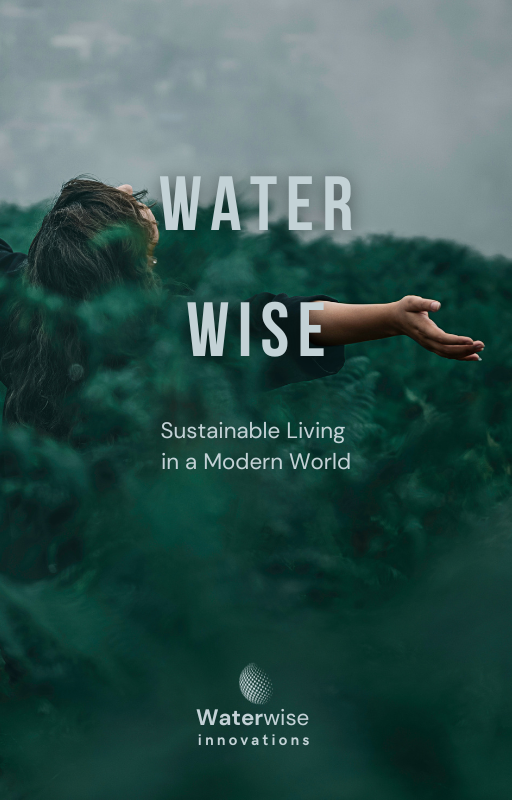
Water Wise: Sustainable Living in a Modern World
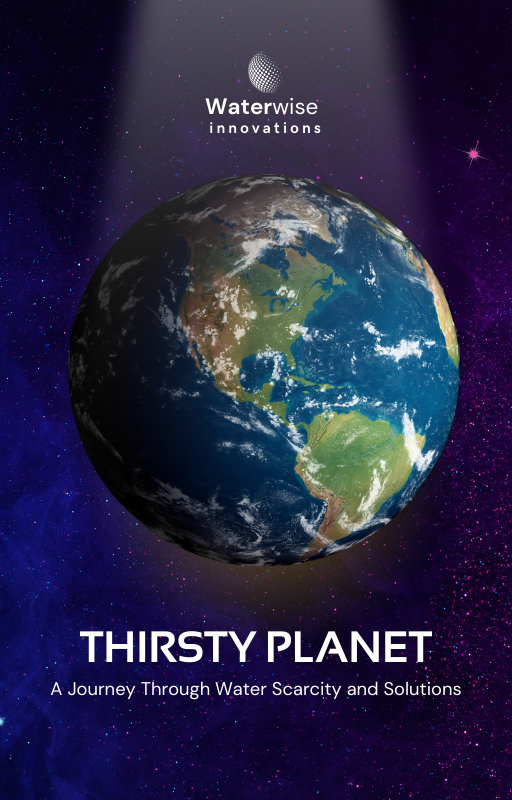
Thirsty Planet: A Journey Through Water Scarcity and Solutions
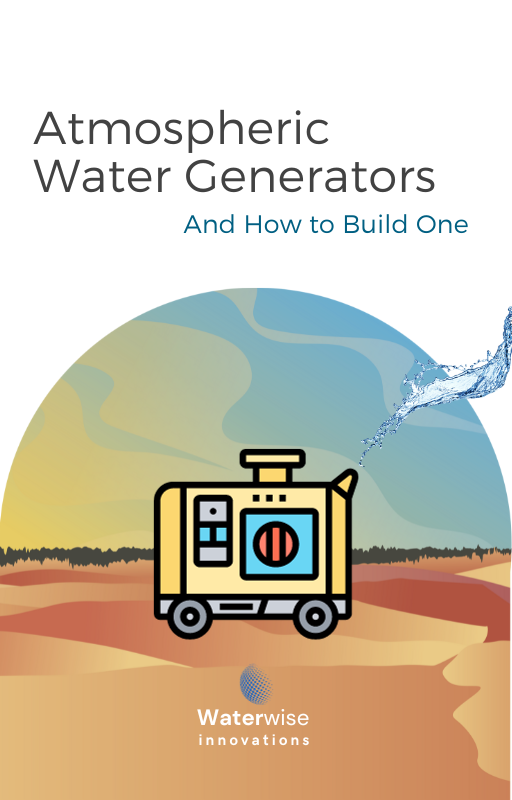
Atmospheric Water Generators: And How to Build One
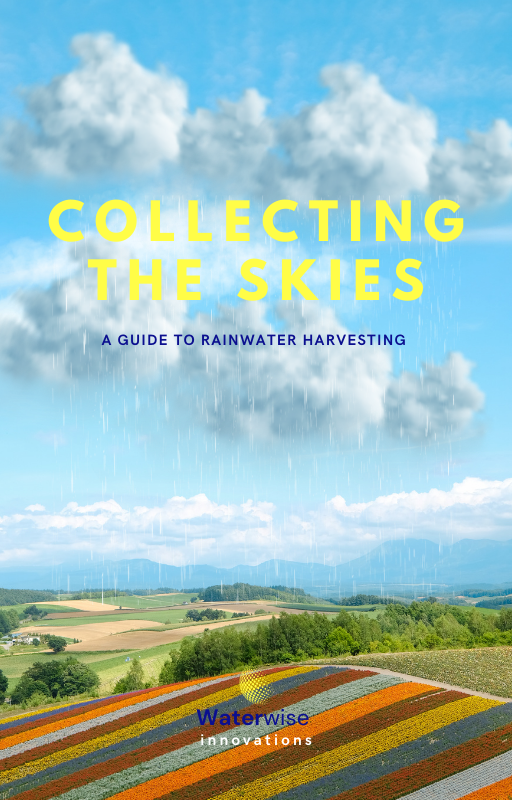
Collecting the Skies: A Guide to Rainwater Harvesting

The Little Book on Hydration: The People’s Guide To Health, Vitality & Flow
Reviews of San Luis Obispo Water Management
There are no reviews yet. Be the first one to write one.
There are no reviews yet. Be the first one to write one.







